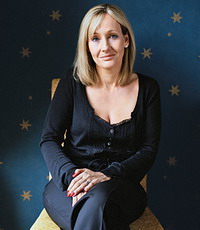Login form
Literature

Novels, poems, plays, folktales, and myths—all these are literature. Literature exists in all cultures. By writing literature, people communicate ideas and feelings. By reading literature, we share these ideas and feelings. Literature lets us visit places and people we might otherwise never know. And we don’t even have to leave our chairs. Let’s take a look at different kinds of literature.
WHAT IS FICTION?
Many people like to read fiction—stories that writers make up in their imagination.
Novels and short stories are fiction. Even though the characters and events in fiction are imaginary, a good writer can make us believe they are real.
A novel is usually a long book. Its plot (main story) is packed with twists and turns, and it may have several subplots (smaller stories within the main story). A short story tells only one story and is shorter than a novel.
Fiction doesn’t have to describe the world we know. Many people read fiction to escape everyday life. Fiction can offer a substitute life, perhaps an adventure or a romance. Reading about other people’s struggles, hopes, and decisions can sometimes give us a better understanding of our own life.
Some people like scary or spooky tales. Others like to read science-fiction stories that imagine life on other planets or life in the future. Readers also enjoy unraveling the puzzles of mystery and spy fiction. Fantasy fiction describes magical or supernatural events. Historical fiction takes us back to the past. Fiction has something for everyone.
WHAT IS POETRY?
Poetry, like all literature, makes use of language. But poetry uses words in special ways. It emphasizes their sounds and rhythms. It makes patterns of sound and rhythm. Most of the patterns in poetry come from repetition.
Rhyme is a pattern that repeats sounds. The line “You must never go down to the end of the town” rhymes the repeated sound in the words down and town. Notice the rhythm of that line, too. Read it out loud and see which words you stress most.
Rhythm is also a pattern. Poets produce rhythm by repeating words, syllables (parts of words), or beats. English writer A. A. Milne repeated words and beats in the poem “Disobedience,” which begins
James James
Morrison Morrison
Weatherby George Dupree
In “Jabberwocky,” English writer Lewis Carroll shows that we don’t even need to understand the words of a poem to enjoy their sounds and rhythms.
’Twas brillig, and the slithy toves
Did gyre and gimble in the wabe;
All mimsy were the borogoves,
And the mome raths out grabe.
Poetry also creates pictures in our minds. It helps us see or imagine things in new ways. American poet Carl Sandburg wrote, “The fog comes in on little cat feet.” Can you picture it? By comparing fog to a cat, Sandburg is telling us that fog moves silently and stealthily, just like a cat. Poets like to make comparisons to help us see things.
WHAT IS DRAMA?
Drama is literature meant to be acted out. Drama tells a story through its characters. The characters, played by actors, speak words called the dialogue. The plot, or story, is told through the dialogue.
Since ancient times, the two main kinds of drama have been tragedy and comedy. Tragedy deals with serious issues. The main character usually goes through some kind of struggle, perhaps in trying to decide the right way to behave in a difficult situation. A tragedy generally ends unhappily, sometimes with a disaster or the death of an important character.
Comedy deals with the lighter side of life. It pokes fun at people and usually ends happily. Comedy can be witty and wise, or silly and full of ridiculous situations.
WHAT ARE FOLKTALES AND MYTHS?
Folktales include fairy tales, animal tales, and tall tales. Folktales that involve unlikely events, magic, and supernatural beings are called fairy tales. Animal tales are stories about animals that usually have been given human speech and human traits. When animal tales include a moral or lesson about behavior, they are known as fables. Tall tales are wild exaggerations. They tell about events that couldn’t possibly have happened.
Myths are generally stories about gods and goddesses. They try to explain how the world and all the things in it were created.
WHAT IS NONFICTION?
Have you ever been asked to write a report on spiders, Thanksgiving, or pioneer life in the West? That is nonfiction writing. Nonfiction is based on information that is real and not made up in the imagination of the author. Nonfiction includes biographies, history, and science writing. It includes books on how to do something and how to improve our lives.
GREAT LITERATURE LASTS
Writing changes over time to reflect the needs of each generation. But literature also explores basic human feelings, such as greed, love, and ambition. These feelings have changed very little over time. They have always inspired good stories told well. For this reason, we can still enjoy great literature of any age for its story and expressive language.
Source: Microsoft ® Encarta

